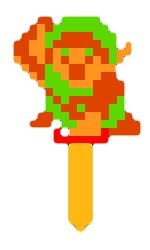I remember a day when old RPG games had either a level cap or a definite ending. From Pool of Radiance to Secrets of the Silver Blades to Final Fantasy the game had a final boss or stage and often had some type of level cap. Today, gamers don’t want it to end, they’d rather have the option to wonder around aimlessly or completing minor quests in order to soak up every ounce of money they spent on the title.
 Now even Bethesda is saying “we’ve learned our lesson” from the whiplash of ending their game title and capping levels. Gamers want to go back and re-try content they missed, they want to run side quests and talk to everyone in the world they want to grind themselves to über powerful levels and become a god in their fantasy world. Can you blame them?
Now even Bethesda is saying “we’ve learned our lesson” from the whiplash of ending their game title and capping levels. Gamers want to go back and re-try content they missed, they want to run side quests and talk to everyone in the world they want to grind themselves to über powerful levels and become a god in their fantasy world. Can you blame them?
You can’t really blame them for wanting to maximize the content, although it’s slightly more evolved than RPG’s of old. Perhaps it was World of Warcraft and other MMORPG’s that brought us to the stage in life where we all want to squeeze every last RPG dime out of the title. As a kid I wondered the world of Hyrule and covered every tile of graphical color, burned every bush, bombed every stone looking for all the content. However, even Zelda had an end with scrolling credits – you didn’t just land on a platform with your master sword and a dream.
Other titles have used level caps to limit you and draw you into the next release of the game. This was popular in the D&D world because the game is designed to target specific levels of difficulty. They may only allow you to gain level 10 because the enemies are no tougher than level 13, allowing the challenge to be good but not overwhelming. If they allow you to get to level 50 they’d have to design the game so all the enemies grow powerful along with you — that’s not always a desired result.
Final Fantasy is a popular franchise that typically allows you to grow infinitely powerful depending on how much time you want to spend repeat killing the same enemies. Gamers aren’t always into the grind, they just want to grind “enough” to make the challenges a little more do-able.
Today, however, with larger storage capacity, larger development teams and the desire to build more value into your gameplay experience titles have dozens of side quests and sub-plots that are totally optional. The result of so many sub-quests results in a player who is much more powerful at the end of those quests compared to a player who sticks to the narrow path of the main plot. So, games much grow dynamically challenging to keep the fun per dollar high.
Do you like your RPG’s to have a definite end and a high but capped level?

 Sony’s done it, they’ve announced a wireless keyboard adapter to plug onto the stock PlayStation 3 controller. This isn’t the first time we’ve heard of this, Microsoft pushed out a keyboard for their Xbox 360 controller last year to provide faster chat abilities and, overall, smooth the interface when needing to type.
Sony’s done it, they’ve announced a wireless keyboard adapter to plug onto the stock PlayStation 3 controller. This isn’t the first time we’ve heard of this, Microsoft pushed out a keyboard for their Xbox 360 controller last year to provide faster chat abilities and, overall, smooth the interface when needing to type. If you purchased Rock Band 2 you’ll find you can download 20 free songs if you register at
If you purchased Rock Band 2 you’ll find you can download 20 free songs if you register at
For me it depends entirely on the nature of the RPG in question. IF it’s something “sandbox-ish” (which not every RPG is) then a level cap seems forced. But if the creators are not just testing/promoting a new toolset, and are looking to create a story arc in which the player can participate, then for a degree of satisfaction there should be a conclusion of some sort. It’s still usually in the hands of the player, in that they don’t HAVE to do the end portion (yet) if they don’t want to. I went months without doing the final 4-6 “main story arc” hours of Oblivion before finally finishing it, and even though that particular game lets you continue afterward, any leftover side quests (of which there were few since I’d done almost all of them already) were anti-climactic by comparison. I mean, after you’ve saved the known world from unspeakable evil, who cares if you find the slaughterfish scales for the guy down the street?
And when it’s a hybrid adventure/RPG like the Knights Of The Old Republic series, or Jade Empire, it would make little or no sense to continue playing after the game’s ending, as your character has “fulfilled their mission/destiny/goal”, as it were.
But then, I’m one of the heretics who thought there was too much that happened after The One Ring was destroyed, so what do I know? ‘:P
For me it depends entirely on the nature of the RPG in question. IF it’s something “sandbox-ish” (which not every RPG is) then a level cap seems forced. But if the creators are not just testing/promoting a new toolset, and are looking to create a story arc in which the player can participate, then for a degree of satisfaction there should be a conclusion of some sort. It’s still usually in the hands of the player, in that they don’t HAVE to do the end portion (yet) if they don’t want to. I went months without doing the final 4-6 “main story arc” hours of Oblivion before finally finishing it, and even though that particular game lets you continue afterward, any leftover side quests (of which there were few since I’d done almost all of them already) were anti-climactic by comparison. I mean, after you’ve saved the known world from unspeakable evil, who cares if you find the slaughterfish scales for the guy down the street?
And when it’s a hybrid adventure/RPG like the Knights Of The Old Republic series, or Jade Empire, it would make little or no sense to continue playing after the game’s ending, as your character has “fulfilled their mission/destiny/goal”, as it were.
But then, I’m one of the heretics who thought there was too much that happened after The One Ring was destroyed, so what do I know? ‘:P
Deus Ex was an excellent RPG with a great ending. Well, three of them.
Deus Ex was an excellent RPG with a great ending. Well, three of them.